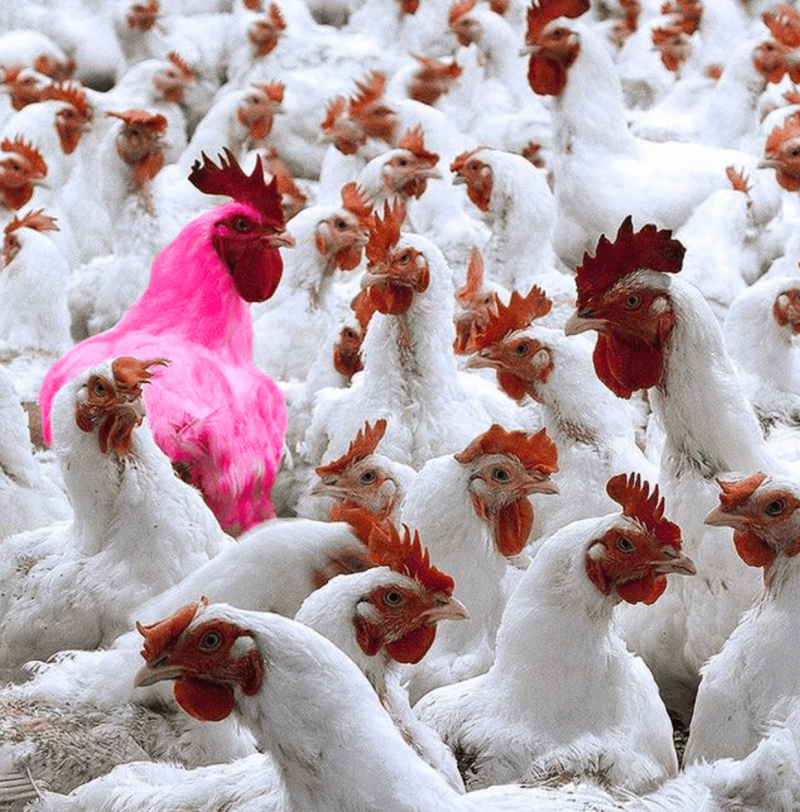A new website called “the Pink Chicken Project” offers up an intriguing nugget of an idea: what if we turned all chickens on Earth pink?” Yes, you read that right. The creators of the project told Motherboard in an email that they are “a small group of designers and engineers with an interest in biotechnology”, and say they want to genetically modify chicken DNA so future domestic birds will be born with pink bones and pink feathers. Right now, though, the project appears to be little more than an artistic concept (complete with some photos of neon pink chicken meat, eggs, and bones).
…
The modification would supposedly be done using the gene editing technique CRISPR, with adoption of the pink color accelerated by a gene drive, a mechanism for increasing the odds an offspring will inherit a trait—such as the color pink—from its parents. The pink color would come from cochineals, a little bug commonly used in food dye. The bug produces a chemical called carminic acid, which combines with calcium in bones to form a dye.
Why would anyone want to do this? According to the project’s website, we should leave reminders for future generation of humanity’s impact on the environment—in the form of discarded pink chicken bones.
The GLP aggregated and excerpted this blog/article to reflect the diversity of news, opinion, and analysis. Read full, original post: These People Want to Genetically Engineer Pink Chickens































